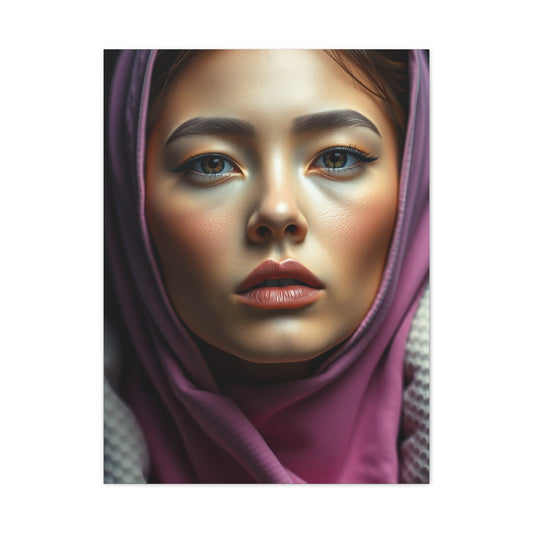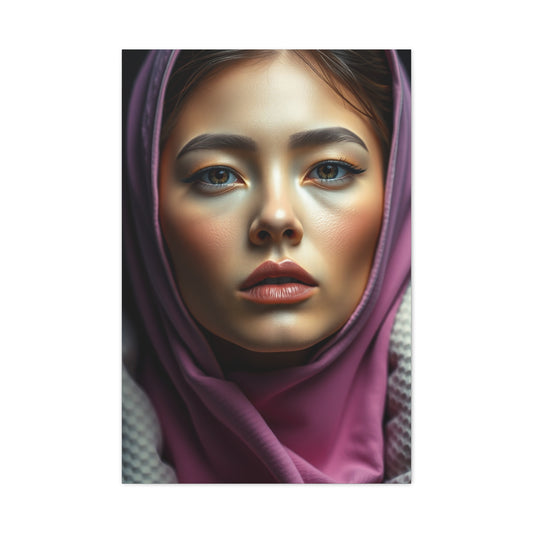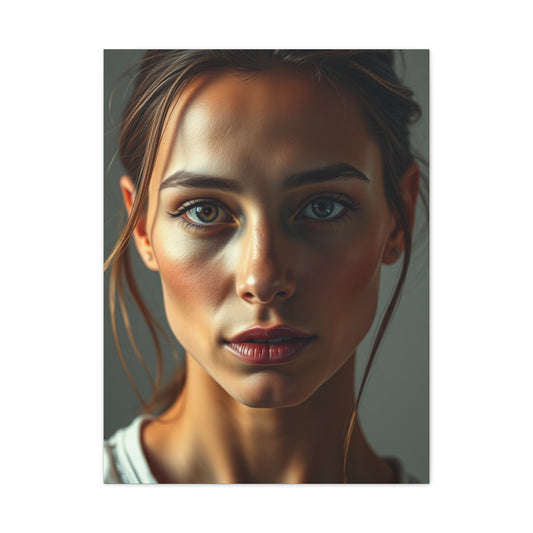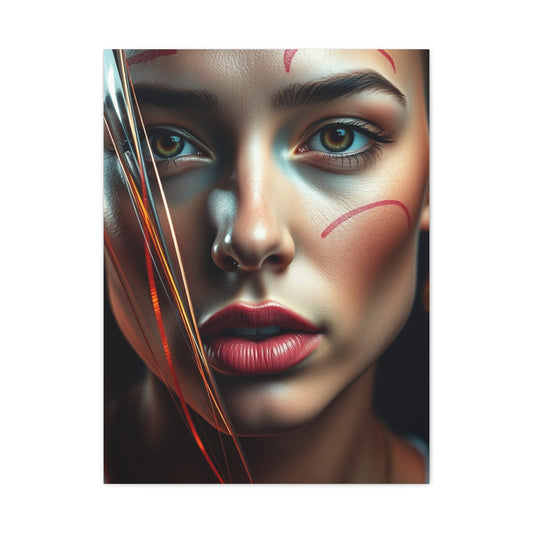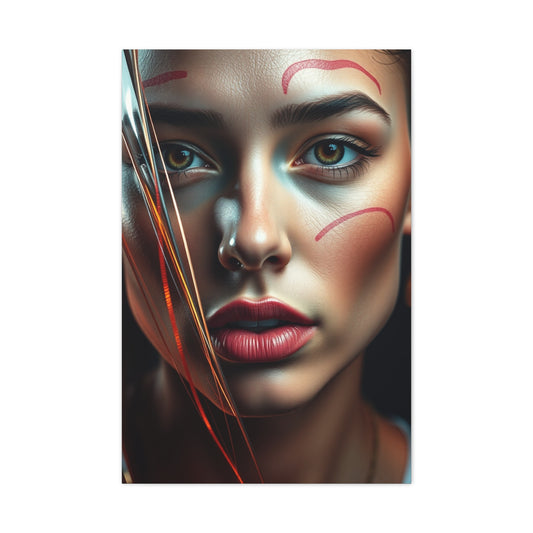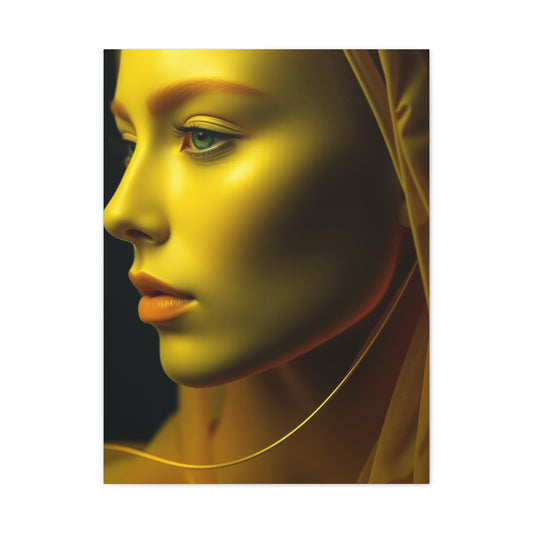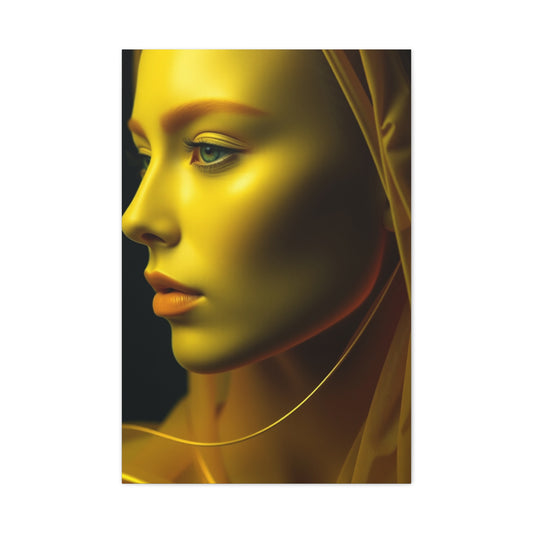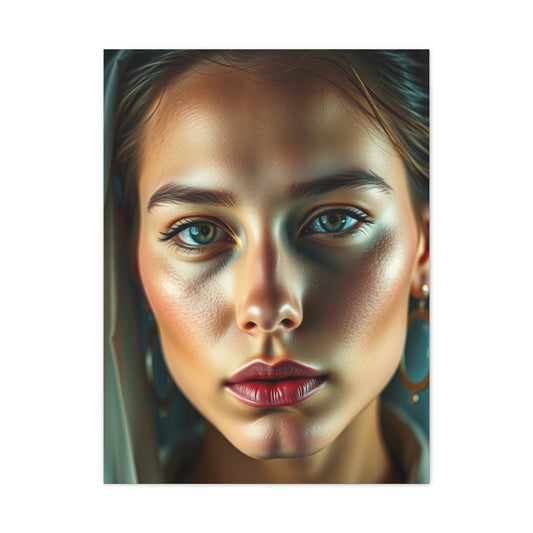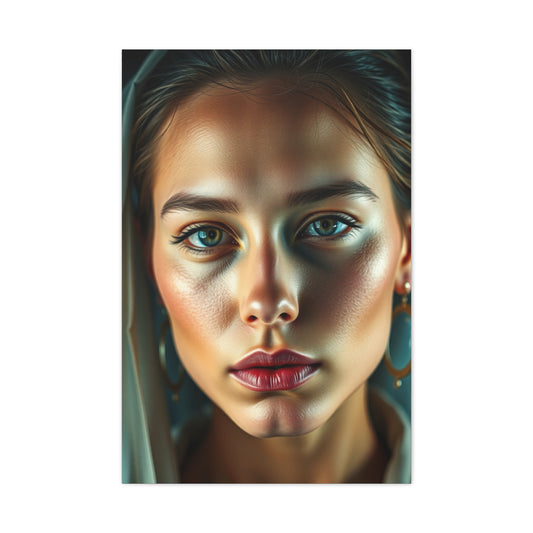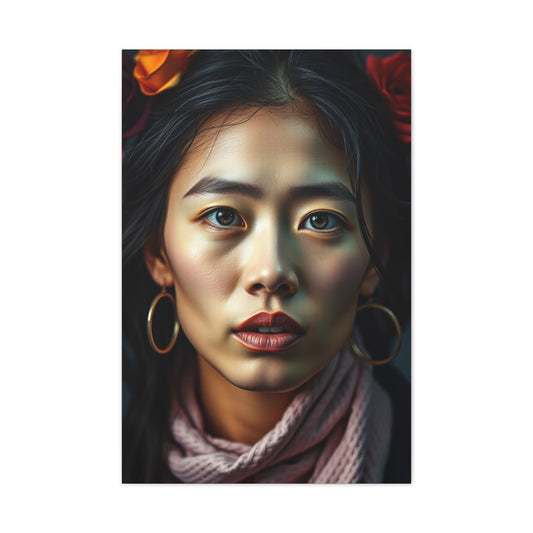In the world of interior design, colors often define the tone, mood, and personality of a space. Every year, new shades rise to prominence, but some hues have the power to remain relevant for decades. Dusty rose, a muted, slightly vintage pink with a subtle hint of warmth, has emerged as one of the most versatile and compelling colors for modern interiors. Its delicate balance between romantic charm and understated elegance allows it to fit seamlessly into a wide variety of décor styles, making it a favorite choice for both subtle accents and bold statements.
Dusty rose offers a unique alternative to traditional neutrals. While shades of beige, gray, and cream have long dominated interior palettes, dusty rose introduces a gentle, sophisticated warmth without overwhelming the space. Its muted tone gives it the ability to act as a neutral, while still bringing a hint of color and personality. Designers and homeowners alike are embracing dusty rose for its chameleon-like qualities, pairing it effortlessly with cooler tones such as soft grays and muted blues or warmer shades like terracotta, deep burgundy, and gold accents.
One of the reasons dusty rose has gained traction is its remarkable adaptability. This shade can be incorporated in both contemporary and classic designs. In a minimalist modern apartment, a blush-toned wall or set of accessories can soften clean lines and stark furniture, creating a more inviting environment. Conversely, in a more traditional or vintage-inspired setting, dusty rose adds a romantic touch, enhancing wood finishes, ornate details, and plush fabrics. Its versatility extends beyond color matching: dusty rose complements a wide range of materials, from sleek metals to soft velvets, matte ceramics, and natural woods.
Wall Treatments and Art
Walls are one of the most powerful canvases in any interior, and dusty rose can make a transformative impact in this regard. A feature wall painted in dusty rose introduces warmth without overpowering a room. Unlike brighter pinks, its subdued nature ensures it doesn’t dominate the space, making it suitable for living rooms, bedrooms, and even kitchens. When paired with neutral furniture, dusty rose walls create a soft backdrop that allows décor elements to stand out while maintaining a cohesive, harmonious atmosphere.
Beyond paint, dusty rose also thrives in artwork and wall décor. Abstract paintings featuring variations of muted pink, lavender, and soft mauve can elevate a space by introducing both color and depth. Floral-inspired prints, especially those reflecting natural rose tones, work well to convey a subtle romanticism. These artworks can be oversized or multi-panel, offering a contemporary twist on classic motifs. Layering art in dusty rose with neutral-toned frames or metallic accents adds further dimension and makes the hue feel intentional rather than incidental.
Furniture and Textiles
Incorporating dusty rose into furniture choices is another strategy that brings the color to life in a space. Upholstered chairs, sofas, or even headboards in dusty rose create focal points that are both stylish and inviting. When balanced with complementary tones such as warm beige, soft ivory, or gentle grays, these pieces can integrate seamlessly into existing décor schemes. Dusty rose is particularly striking in plush fabrics like velvet or silk, which amplify its luxurious appeal while maintaining a soft, approachable quality.
Textiles such as cushions, throws, and rugs are ideal for experimenting with dusty rose in smaller doses. Layering soft pink textiles across different textures—linen, wool, velvet—creates a nuanced, dynamic look without overwhelming the room. Additionally, dusty rose can be blended with subtle patterns, such as geometric designs or understated florals, to keep the aesthetic contemporary and visually interesting. By strategically using textiles, even renters or those hesitant to commit to large furniture pieces can enjoy the elegance of dusty rose in their interiors.
Lighting and Accessories
Lighting is a crucial element in highlighting the beauty of dusty rose. Soft, warm lighting enhances its gentle undertones, while natural daylight brings out its muted vibrancy. Pendant lights, lampshades, and chandeliers in pale pink or complementary metallic tones like rose gold, brass, or matte copper can subtly reflect and amplify dusty rose accents throughout a room. These choices work particularly well in living rooms and bedrooms, where lighting can create a cozy, inviting ambiance.
Accessories are another area where dusty rose truly shines. Decorative objects such as vases, candle holders, picture frames, and even kitchenware can subtly reinforce a room’s color palette. Layering accessories in dusty rose alongside neutral and earthy tones helps create balance while maintaining an elegant, coordinated aesthetic. For instance, a dusty rose vase filled with dried flowers on a beige or wooden side table becomes a striking focal point without overwhelming the space.
Mixing Warm and Cool Variations
Dusty rose is unique in that it exists along a spectrum of warmth and coolness. Warm dusty rose tones, leaning toward peachy pinks, bring energy and vibrancy to a space, making them ideal for areas where liveliness is desired, such as kitchens or living rooms. Cool dusty rose shades, with hints of mauve or muted lavender, provide a calming, serene quality, perfect for bedrooms, bathrooms, and spaces designed for relaxation.
Instead of choosing one over the other, some designers experiment with mixing warm and cool variations within the same room. This approach allows for a layered, complex aesthetic that feels dynamic yet cohesive. For example, a cool-toned dusty rose wall can be balanced with warm-toned cushions, throws, or decorative objects. The interplay of shades creates visual depth and prevents the room from feeling flat or monotonous.
Pairing with Other Colors
Dusty rose is remarkably easy to pair with other colors. Classic neutrals like ivory, beige, taupe, and gray create a clean, sophisticated palette when combined with dusty rose, allowing the hue to shine without overpowering the space. For those seeking more contrast, pairing dusty rose with deeper shades like navy, burgundy, or forest green introduces a striking, balanced visual interest. Lighter blues, muted greens, and soft lavender tones also harmonize beautifully, emphasizing a gentle, tranquil vibe in bedrooms or living areas.
Beyond these combinations, dusty rose is also effective when used with metallics. Gold, brass, copper, and even brushed nickel complement its warmth and provide a subtle hint of luxury. These metallic accents can be incorporated through hardware, lighting, or small decorative objects, adding refinement and depth to a dusty rose-focused interior.
Dusty rose is more than a color—it’s a design tool that can dramatically transform the mood and feel of a space. Its muted, versatile tone allows it to be applied in virtually any room, from the bedroom to the kitchen, and still maintain elegance and sophistication. While it can easily complement neutrals and metallics, dusty rose also brings warmth, depth, and a subtle romantic energy to interiors. In this part, we explore how to incorporate dusty rose in specific rooms of the home, along with ideas for textures, materials, and layering to make each space feel curated and timeless.
Bedrooms: A Sanctuary of Softness
Bedrooms are spaces of rest and rejuvenation, and dusty rose is particularly well-suited to create a calming and serene environment. One of the most effective ways to use this color is on walls. A muted, cool-toned dusty rose wall can act as a soft backdrop for furniture and bedding in neutral shades like gray, ivory, or beige. In contrast, warmer dusty rose tones can infuse energy and a gentle sense of intimacy, making them ideal for rooms where subtle vibrancy is desired.
Furniture choices also play a crucial role in dusty rose bedrooms. Upholstered headboards or benches in this hue introduce a luxurious feel without dominating the space. Combining dusty rose furniture with layered bedding in complementary shades—such as pale pink sheets, mauve pillows, or cream blankets—creates a sophisticated palette that feels both romantic and modern. Accent pieces, including side tables, lamps, or artwork, can subtly echo the dusty rose theme, reinforcing cohesion while adding depth.
Textiles and soft furnishings are another powerful tool in a dusty rose bedroom. Layering textures such as velvet, linen, or knit fabrics enhances the tactile experience of the room, while varying shades of pink and mauve prevent monotony. Rugs in dusty rose tones can anchor the space and create warmth underfoot, particularly in minimalist or neutral rooms that might otherwise feel cold or sparse. Small decorative elements, like cushions, throws, or curtains, also allow for experimentation with different shades and patterns, offering flexibility for future redesigns.
Living Rooms: Warmth and Community
Living rooms are often the heart of a home, and dusty rose is ideal for creating a welcoming, cozy, yet sophisticated atmosphere. Unlike more vibrant pinks that can feel youthful or playful, dusty rose has a subdued, elegant quality that works well in shared spaces. Incorporating dusty rose in sofas, armchairs, or ottomans creates focal points without overwhelming the room. Neutral furniture pieces, such as beige or gray couches, can be paired with dusty rose cushions and throws to bring balance and cohesion.
Wall décor and art provide additional opportunities to incorporate dusty rose. Abstract paintings, floral prints, or multi-panel canvases in shades of muted pinks and mauves introduce visual interest and help tie together various elements in the room. Combining both warm and cool dusty rose tones in artwork ensures the living area feels layered and dynamic. For added contrast, pair dusty rose with deeper colors like navy, forest green, or charcoal for a balanced, mature look. Metallic accents in brass, copper, or rose gold further enhance the warmth and sophistication of the space.
Lighting is equally important in dusty rose living rooms. Warm, soft lighting enhances the gentle undertones of the color, creating a cozy, inviting ambiance. Lampshades, chandeliers, or pendant lights in complementary shades subtly reflect dusty rose accents throughout the room. Natural light also plays a significant role: dusty rose walls and furnishings often appear richer and more luminous when bathed in sunlight, bringing out the depth and complexity of the hue.
Kitchens: A Fresh Perspective
Traditionally, kitchens have leaned toward neutral tones or bright whites, but dusty rose offers a fresh alternative that balances vibrancy with elegance. Cabinets in pale pink or muted rose tones can create an unexpected but sophisticated visual impact. These shades work particularly well when paired with natural materials such as marble countertops, wooden shelving, or stone backsplashes. For an added touch of cohesion, consider subtle dusty rose accessories like dishware, utensils, or small appliances, which echo the primary color palette without feeling overwhelming.
Dusty rose in kitchen décor also works well as a statement accent. Painting an island or a single wall in this shade can introduce warmth and personality, creating a focal point in the room. Mixing warm and cool dusty rose tones across cabinetry or furniture allows the space to feel dynamic and layered. When combined with neutral tones such as white, gray, or beige, dusty rose maintains its sophistication while enhancing the overall visual interest.
Lighting and textures are key in dusty rose kitchens. Warm pendant lights, copper fixtures, or soft under-cabinet lighting complement the muted pink tones, while textured surfaces like matte cabinetry, tiled backsplashes, or brushed metal handles add dimension. The interplay of light, color, and texture ensures that dusty rose remains an elegant, integrated part of the kitchen rather than a fleeting trend.
Dining Rooms: Subtle Luxury
Dining rooms in 2025 are moving away from heavy, dark tones and embracing lighter, pastel-inspired color schemes. Dusty rose offers the perfect balance between casual charm and subtle luxury. Chairs upholstered in dusty rose, combined with light-colored wooden tables, create a chic and inviting space suitable for both formal dinners and everyday meals. Adding soft fabrics like velvet or silk cushions elevates the space without making it feel overly formal, while maintaining comfort and accessibility.
Wall décor, table runners, and floral arrangements in dusty rose tones reinforce cohesion in the dining area. For a modern take, consider pairing dusty rose with muted greens, soft grays, or natural wood tones. This combination keeps the room feeling fresh, airy, and contemporary. Textures are also essential: glossy dinnerware, linen napkins, or subtle metallic accents can add dimension and refinement without overwhelming the soft elegance of dusty rose.
Lighting can further enhance the atmosphere. Warm, ambient lighting, such as pendant lamps or chandelier fixtures in complementary shades, creates a welcoming environment for dining. The muted pink tones of dusty rose subtly reflect the light, casting a gentle, romantic glow across the table. This effect elevates the dining experience, making it feel more intimate, inviting, and aesthetically pleasing.
Bathrooms: Serenity in Soft Hues
Bathrooms are often overlooked when it comes to color experimentation, yet they are ideal spaces to introduce dusty rose. An accent wall in muted pink can soften stark white tiles, marble, or stone, while still maintaining a clean and contemporary aesthetic. This color adds warmth to spaces that are typically dominated by cold tones like blue, gray, or green, offering a more personal and comforting ambiance.
Fixtures and accessories can further integrate dusty rose into the bathroom. Towels, mats, and shower curtains in varying shades of pink create visual interest without overwhelming the space. For smaller bathrooms, subtle dusty rose details—such as soap dishes, toothbrush holders, or small vases—can introduce the color without compromising openness or lightness. Combining these elements with neutral surfaces ensures that dusty rose feels intentional and sophisticated rather than decorative or thematic.
Lighting in bathrooms also plays a critical role. Warm, diffused lighting enhances the gentle tones of dusty rose, while reflective surfaces like mirrors, glass, and polished tiles help amplify the color’s presence. The result is a spa-like atmosphere that feels serene, luxurious, and timeless. Layering textures, such as soft fabrics, matte surfaces, and subtle metallic accents, ensures the color is felt throughout the space while maintaining balance and harmony.
Layering and Mixing
One of the most compelling aspects of dusty rose is its ability to layer and harmonize with other colors and materials. The key to success is balance. Pair dusty rose with neutrals like beige, cream, or gray to create a soft, understated palette. Introduce complementary colors, such as muted blues, lavenders, or warm terracotta, for contrast and visual interest. Metallic finishes in gold, brass, or copper can add depth and sophistication, while natural textures like wood, stone, and linen enhance warmth and tactility.
Layering is also an effective technique within the dusty rose spectrum itself. Warm, peach-toned dusty rose pieces can be balanced with cool, mauve-tinted accents to create a dynamic, multi-dimensional look. This approach works across all rooms, from living areas to bedrooms, ensuring that dusty rose remains versatile, adaptable, and never monotonous.
Dusty rose is a remarkably versatile color, bridging the gap between muted sophistication and soft romanticism. Its muted tones make it easy to blend into a variety of décor schemes while also allowing it to shine as a statement feature. Beyond its application in walls, furniture, and textiles, one of the most exciting aspects of dusty rose is how it interacts with other colors, patterns, and textures. Thoughtful layering and pairing can transform a simple interior into a visually dynamic, cohesive space.
The Art of Color Pairing
The flexibility of dusty rose allows it to harmonize with both neutral and bold colors. When paired with neutral shades like ivory, beige, taupe, or gray, dusty rose exudes understated elegance. This combination works particularly well in spaces designed for relaxation or subtle sophistication, such as bedrooms, living rooms, and bathrooms. The muted quality of dusty rose softens the starkness of cooler neutrals, while the neutrals provide a stabilizing backdrop that keeps the overall design calm and cohesive.
For those seeking contrast, dusty rose pairs beautifully with deeper, richer colors. Shades like navy, forest green, charcoal, and burgundy complement dusty rose’s warmth while providing a dramatic visual anchor. A dusty rose sofa against a deep navy wall or a dusty rose rug paired with a dark wood dining table creates a layered, balanced effect that feels contemporary yet timeless. Deep colors accentuate the softness of dusty rose, highlighting its romantic undertones without making the room feel overly delicate or feminine.
Dusty rose also interacts gracefully with cooler hues. Muted blues, soft lavenders, and sage greens enhance the calming, soothing qualities of dusty rose, making them ideal for bedrooms, bathrooms, or study areas. This combination emphasizes tranquility while maintaining a sense of warmth. Layering multiple shades of pink, mauve, and lavender within a single space can produce a monochromatic effect that feels cohesive yet nuanced, especially when offset by neutrals or metallic accents.
Incorporating Metallic Accents
Metallic finishes can elevate dusty rose from understated elegance to subtle luxury. Warm metals, such as gold, brass, copper, and rose gold, complement dusty rose’s pink undertones, creating a harmonious, inviting aesthetic. For instance, dusty rose cushions paired with a brass-accented coffee table or a rose gold lamp can imbue a living space with refinement and subtle glamour.
Cooler metallics, like silver or brushed nickel, can also pair successfully with dusty rose, particularly when cooler tones are present in the room. A muted lavender wall combined with dusty rose textiles and silver accents produces a fresh, contemporary palette that feels both airy and sophisticated. Incorporating metallic finishes in small doses—through hardware, lighting, or decorative objects—ensures the effect is stylish and balanced without overwhelming the softness of dusty rose.
Layering Patterns and Textures
While dusty rose is subtle, it provides an excellent canvas for layering textures and patterns. Mixing textures adds depth and interest, preventing a space from feeling flat or monochromatic. In bedrooms, a dusty rose velvet headboard paired with linen bedding, a knitted throw, and silk pillows creates a tactile, multi-dimensional environment. Similarly, in living rooms, pairing a dusty rose sofa with a soft wool rug, patterned cushions, and a smooth marble coffee table can result in a harmonious blend of textures that feels curated yet effortless.
Patterns can also enhance dusty rose’s appeal. Geometric prints, floral motifs, and abstract designs in complementary tones can break up the monotony of solid colors while adding character to the space. For example, a geometric dusty rose rug in a living room with neutral furniture can anchor the space and provide a subtle focal point. Floral prints in muted pinks and lavenders can reinforce the romantic undertones of the color, while abstract designs introduce a contemporary edge. Layering patterns in small doses, such as throw pillows or wall art, ensures the overall look remains sophisticated rather than chaotic.
Seasonal Styling with Dusty Rose
One of dusty rose’s most valuable qualities is its adaptability across seasons. Its muted warmth makes it suitable for winter interiors, where it pairs beautifully with cozy textures like velvet, wool, and faux fur. During colder months, dusty rose can be layered with deep jewel tones, such as emerald, sapphire, or burgundy, creating a rich, inviting palette that feels luxurious and intimate. Candles, metallic accents, and warm lighting can further enhance the seasonal mood, amplifying dusty rose’s inherent warmth.
In spring and summer, dusty rose takes on a lighter, fresher character. Paired with whites, creams, and soft greens, it creates a breezy, airy atmosphere ideal for living rooms, bedrooms, or outdoor spaces. Light, natural fabrics like linen, cotton, and rattan complement dusty rose, emphasizing its versatility while keeping interiors bright and uplifting. Seasonal accents, such as dried flowers, greenery, and woven baskets, reinforce the organic, approachable quality of dusty rose and allow the color to transition seamlessly between warmer and cooler months.
Dusty Rose in Different Décor Styles
Dusty rose’s versatility extends to its compatibility with various décor styles. In contemporary interiors, it introduces softness and warmth to minimalist spaces dominated by clean lines and neutral palettes. A dusty rose accent wall, paired with simple furniture and subtle metallic touches, can prevent minimalistic designs from feeling stark or cold.
In romantic or vintage-inspired décor, dusty rose naturally enhances the nostalgic, delicate aesthetic. Soft, plush fabrics, floral patterns, and antique furniture pieces combined with dusty rose create a cohesive, inviting space that balances charm with elegance. For industrial or eclectic interiors, dusty rose can act as a counterbalance to raw materials like exposed brick, concrete, or metal. In these contexts, dusty rose softens the hardness of industrial elements, bringing harmony and depth to bold, edgy designs.
Bohemian interiors also benefit from dusty rose’s muted warmth. Layered textiles, patterned rugs, and eclectic furniture paired with dusty rose accents unify diverse elements while maintaining a relaxed, welcoming ambiance. The color acts as a bridge, tying together contrasting textures, patterns, and colors without overpowering the space.
Creative Applications Beyond Walls and Furniture
While walls, furniture, and textiles are common ways to incorporate dusty rose, there are numerous other creative applications. Decorative objects, such as vases, candleholders, or sculptural pieces, can subtly reinforce the color palette. Artwork featuring dusty rose tones introduces movement and complexity, while mirrors with rose-tinted frames or metallic finishes amplify light and add elegance.
In kitchens and bathrooms, dusty rose can appear in unexpected ways, such as in cabinetry, tiles, countertops, or fixtures. Even small touches, like dishware, towels, or bath accessories, allow the color to permeate the space without committing to large surfaces. Using dusty rose in these smaller doses adds personality and depth, demonstrating that even subtle applications of color can have a significant impact.
Balancing Dusty Rose with Natural Elements
Incorporating natural materials alongside dusty rose enhances its organic, calming quality. Wood, stone, ceramics, and textiles like linen or jute create a grounded, balanced environment when paired with this muted pink. Wooden flooring, shelves, or side tables complement dusty rose furnishings, while stone countertops or ceramic décor pieces introduce subtle texture and contrast. Integrating greenery, whether through indoor plants or floral arrangements, adds vibrancy and life to dusty rose interiors, ensuring the color feels fresh and alive rather than muted or flat.
Creating Cohesion Across Rooms
One of dusty rose’s strengths is its ability to unify multiple rooms in a home. By using variations of the color in different spaces, homeowners can create a consistent, cohesive aesthetic without making the interior feel monotonous. For example, a living room might feature a dusty rose sofa, while the adjacent dining room incorporates dusty rose seating or wall art. Bedrooms might include dusty rose bedding or textiles, and bathrooms could use subtle dusty rose accents in towels or accessories. By maintaining a thread of color throughout, spaces feel connected and intentional, enhancing the flow and overall harmony of the home.
Dusty rose is far more than a fleeting trend—it is a timeless color capable of transforming interiors across multiple design styles, from minimalist and contemporary to vintage and bohemian. While the previous sections explored the use of dusty rose in different rooms, color pairings, and creative approaches, this final part focuses on how to refine, layer, and sustain dusty rose in interiors to create cohesive, sophisticated, and long-lasting designs.
Finishing Touches: Subtle Enhancements
Even when dusty rose is used sparingly, its impact can be profound. Finishing touches, or accent elements, are essential for tying a room together. Decorative objects such as vases, candleholders, frames, and small sculptures in dusty rose or complementary shades subtly reinforce the color scheme. These accents allow the color to permeate the room without dominating it, making it easy to refresh or adjust over time.
Lighting is a crucial finishing touch that enhances dusty rose’s natural elegance. Warm, soft lighting brings out the subtle pink undertones, creating a cozy, inviting atmosphere. Fixtures in rose gold, copper, or brass complement dusty rose beautifully, while soft white or warm LED bulbs amplify the color without altering its muted quality. Layered lighting, including ambient, task, and accent lights, ensures that dusty rose looks appealing at any time of day and under different moods.
Textiles also serve as finishing touches that solidify a dusty rose color palette. Throw blankets, pillows, curtains, and rugs in dusty rose or coordinating shades provide a soft, tactile dimension to the space. For instance, a neutral-toned sofa paired with dusty rose cushions and a textured throw can instantly add warmth and personality without overwhelming the room. Choosing textiles with varying textures—velvet, linen, silk, or knit—enhances depth and creates a visually rich environment.
Layering Dusty Rose: Depth and Dimension
One of the most effective strategies for working with dusty rose is layering. Layering involves using multiple shades, textures, and materials to create a multidimensional, cohesive look. This technique is especially useful because dusty rose exists on a spectrum of warmth and coolness. Warm dusty rose tones, leaning toward peach or coral, inject vibrancy and energy, while cooler dusty rose shades, infused with mauve or lavender, evoke calm and serenity. Mixing these variations within a room produces visual interest and prevents the design from feeling flat or one-dimensional.
Layering works well across furniture, textiles, and accessories. For example, in a living room, a pale dusty rose sofa can be paired with warm-toned throw pillows and a mauve-toned area rug. Additional accents, such as a rose gold lamp or blush-toned wall art, unify the design while adding dimension. In a bedroom, layering can be achieved through bedding combinations, with sheets in a soft blush, pillows in muted mauve, and a textured throw in dusty rose. This creates a sense of depth and comfort, elevating the overall aesthetic.
Patterns and textures are also crucial in layering dusty rose. Geometric designs, florals, abstract prints, and stripes can coexist within the same space when tied together by a consistent color palette. A muted floral wallpaper in dusty rose tones paired with patterned cushions, a textured rug, and soft curtains creates a dynamic yet harmonious environment. The key is balance: layering should feel intentional, not cluttered, and each element should complement rather than compete with the others.
Creating Cohesion Throughout the Home
One of dusty rose’s greatest strengths is its ability to create cohesion across multiple spaces. Using this muted pink consistently throughout a home can tie together disparate rooms and provide a sense of continuity. For instance, a living room with dusty rose accents can flow seamlessly into a dining area with dusty rose chairs or table décor. Bedrooms can include dusty rose bedding or textiles, while bathrooms can feature towels, mats, or subtle wall treatments in complementary shades.
This cohesive approach does not require exact color matching. Instead, variations of dusty rose, combined with coordinating neutrals and textures, create harmony while maintaining visual interest. For example, a warm dusty rose living room can transition into a cool mauve bedroom through subtle differences in tone, ensuring that the palette evolves naturally across spaces. Accessories and textiles play a critical role in reinforcing this continuity, acting as small bridges that carry the color throughout the home.
Sustainable Styling: Long-Term Adaptability
Dusty rose is remarkably adaptable, making it suitable for long-term styling. Unlike more trend-driven shades, its muted quality ensures it remains relevant across design cycles. To maximize longevity, consider incorporating dusty rose through elements that are versatile and easily updated, such as textiles, artwork, and accessories, rather than large permanent features like wall paint or cabinetry. This approach allows for periodic refreshes without major renovations while retaining the overall aesthetic appeal.
Layering dusty rose with neutrals, metallics, and natural materials also contributes to sustainability in styling. Neutral backdrops, including ivory, gray, beige, and taupe, provide flexibility to change accent colors over time without needing to replace the core components. For example, a living room with a neutral sofa and dusty rose cushions can be refreshed with seasonal throws, new artwork, or metallic accents, keeping the space current while maintaining continuity.
Integrating Natural Elements
Natural elements further enhance dusty rose’s timeless appeal. Wood, stone, ceramics, and natural textiles complement dusty rose’s muted warmth and bring balance to interiors. Light or medium-toned wooden furniture pairs beautifully with dusty rose, while stone or ceramic decorative items introduce subtle texture. Incorporating greenery, such as houseplants or floral arrangements, not only contrasts with dusty rose but also adds vibrancy and life to the space. Natural materials anchor the color palette, ensuring that dusty rose feels integrated and grounded rather than overly stylized.
Seasonal Flexibility
Dusty Rose’s versatility extends to seasonal styling. In spring and summer, it pairs well with light neutrals, soft greens, and airy fabrics, creating bright and fresh interiors. During fall and winter, dusty rose can be combined with deeper, richer tones like burgundy, navy, or forest green, along with plush textiles like velvet and wool, to evoke warmth and intimacy. This seasonal adaptability ensures that dusty rose interiors feel dynamic and relevant year-round, allowing homeowners to refresh spaces without altering core color schemes.
Balancing Bold and Subtle Applications
Dusty rose can function as both a subtle accent and a bold statement. In rooms with neutral bases, introducing dusty rose through furniture, wall art, or textiles creates a gentle, harmonious effect. Conversely, in spaces where dusty rose is applied more boldly—such as a feature wall, an upholstered sofa, or cabinetry—it can define the room’s character and mood. The key is balance: pairing bold dusty rose elements with grounding neutrals, metallics, or natural materials prevents the color from becoming overwhelming while allowing it to shine as a design focal point.
Mixing Styles and Eras
Another advantage of dusty rose is its compatibility with a range of décor styles and historical influences. In contemporary interiors, it softens minimalist designs, adding warmth and subtle elegance. In traditional or vintage-inspired spaces, dusty rose enhances romantic charm and nostalgic appeal. Industrial interiors benefit from dusty rose’s softening effect, counterbalancing raw materials like concrete, metal, and exposed brick. Bohemian and eclectic spaces thrive with dusty rose as a unifying element, tying together diverse patterns, textures, and color accents.
Dusty rose can also bridge styles from different eras. Pairing mid-century modern furniture with dusty rose accents creates a warm, retro-inspired palette, while modern minimalist furniture combined with mauve or blush textiles feels current and sophisticated. Its muted quality ensures that it remains complementary rather than clashing, making it an ideal choice for layering historical and contemporary influences.
Practical Applications and Everyday Living
Dusty rose is practical for everyday living, not just aesthetic purposes. In high-use spaces like living rooms and bedrooms, the color’s muted quality helps conceal wear and tear better than brighter, more saturated tones. Additionally, its versatility allows homeowners to introduce it in both permanent and temporary ways, such as through wall art, throw pillows, rugs, or bedding. This practicality makes dusty rose a functional and attractive choice for modern interiors.
Another practical consideration is adaptability to furniture and décor changes. Dusty rose pairs easily with evolving color trends, from muted greens and blues to warm terracotta and jewel tones. Homeowners can update accessories or textiles to refresh a room without needing to overhaul the entire palette. This adaptability ensures that dusty rose remains relevant and stylish over time, offering long-term value for interior design investments.
The Psychological Impact of Dusty Rose
Beyond aesthetics, dusty rose has psychological benefits in interior spaces. Its muted, warm tones evoke feelings of calm, comfort, and romance, making it ideal for spaces designed for relaxation or socializing. Bedrooms and bathrooms benefit from its soothing effect, while living rooms and dining areas gain warmth and approachability. The color’s subtle elegance also fosters a sense of refinement, enhancing the overall mood of a space without feeling imposing or overly dramatic.
By incorporating dusty rose thoughtfully, homeowners can create interiors that are not only visually appealing but also emotionally comforting. Its versatility allows it to suit personal tastes and lifestyles, whether one prefers a serene retreat, a social gathering space, or a romantic, intimate environment.
Dusty rose is more than a muted pink—it is a cornerstone of sophisticated, timeless interior design. Its ability to harmonize with neutrals, complement bold or muted tones, and pair with a wide variety of textures and materials makes it an essential tool for creating balanced, dynamic, and cohesive interiors. By incorporating dusty rose thoughtfully, layering shades, mixing patterns and textures, and balancing bold and subtle applications, homeowners can achieve spaces that are both visually compelling and emotionally satisfying.
The adaptability of dusty rose across seasons, décor styles, and functional spaces ensures it remains relevant and versatile over time. Natural elements, metallic accents, and thoughtful lighting further enhance its beauty, making it an integral component of long-term interior planning. Whether used in bedrooms, living rooms, dining areas, kitchens, or bathrooms, dusty rose offers warmth, elegance, and subtle romance, proving that understated colors can leave a lasting impact.
Dusty rose has firmly established itself as a versatile and sophisticated color in modern interiors. Its muted, understated elegance allows it to function both as a neutral backdrop and a focal point, giving homeowners the freedom to experiment with bold statements or subtle touches. In this fifth part of the series, we explore advanced design strategies, creative combinations, and practical approaches to incorporating dusty rose across your home. These insights focus on creating dynamic, cohesive, and stylish interiors while maintaining long-term adaptability.
Combining Dusty Rose with Complementary Colors
Dusty rose’s muted quality makes it an excellent partner for a wide range of color palettes. One of the most effective strategies is to pair it with soft neutrals such as beige, ivory, taupe, and warm gray. These combinations create calm, balanced interiors that feel timeless and refined. For instance, a dusty rose sofa or armchair paired with a beige rug and light wood furniture produces a cozy, harmonious environment suitable for both living and dining areas.
For a more dynamic approach, dusty rose can be combined with deeper, richer tones. Shades such as navy, forest green, charcoal, and burgundy provide contrast and depth, making dusty rose appear more vibrant and layered. A dusty rose accent wall behind a deep green or navy bed frame, for example, establishes a dramatic focal point without overwhelming the room. Metallic accents in gold, copper, or bronze further enhance these combinations, adding warmth and a subtle luxurious touch.
Cool tones also complement dusty rose effectively. Soft blues, muted greens, and lavenders highlight its calming and romantic qualities. This pairing works particularly well in bedrooms, bathrooms, or home offices, where a serene, relaxing atmosphere is desirable. Monochromatic schemes can also be achieved by layering multiple shades of pink, mauve, and lavender throughout a space, providing visual cohesion and depth.
Balancing Dusty Rose with Patterns and Textures
Texture and pattern play a crucial role in elevating dusty rose interiors. The color’s subtle tone serves as an ideal canvas for experimenting with fabrics, finishes, and surface treatments. Velvet, silk, linen, and woven textiles all pair beautifully with dusty rose, enhancing both warmth and sophistication. For example, a dusty rose velvet armchair can be complemented with a linen throw, patterned cushions, or a plush area rug, creating a multi-layered look that feels luxurious yet approachable.
Patterns such as geometric prints, floral designs, stripes, or abstract motifs can be introduced through textiles, wallpaper, and décor objects. In living rooms, a dusty rose geometric rug can anchor the space, while patterned cushions and wall art enhance visual interest. In bedrooms, floral bedding or a subtly patterned curtain can reinforce the romantic undertones of dusty rose without overpowering the room. The key is balance: patterns should complement the overall palette and maintain harmony, ensuring that dusty rose remains the central cohesive element.
Layering Warm and Cool Tones
Dusty rose spans a spectrum of warmth and coolness, which provides a unique opportunity to layer shades for a dynamic interior. Warm dusty rose tones, which lean toward peach or coral, infuse energy and vibrancy, while cooler shades, influenced by mauve or lavender, evoke calm and serenity. Combining these variations creates depth and dimension, particularly when applied across textiles, furniture, and wall décor.
For instance, a living room might feature a warm dusty rose sofa paired with cool mauve cushions and a neutral-toned rug. Wall art incorporating both warm and cool pink tones can further tie the elements together, ensuring cohesion while keeping the space visually stimulating. This layered approach also allows flexibility for seasonal adjustments. In summer, cooler dusty rose shades can dominate for a light, airy feel, while warmer tones can take prominence in winter for a cozy, intimate atmosphere.
Dusty Rose in Furniture Design
Furniture offers one of the most impactful ways to incorporate dusty rose into interiors. Upholstered chairs, sofas, ottomans, and headboards in dusty rose act as statement pieces, grounding the space while providing warmth and elegance. Selecting durable materials, such as velvet or tightly woven fabrics, ensures that furniture pieces retain both their color and texture over time.
When integrating dusty rose furniture, balance is key. Neutral furniture pieces, such as beige sofas, wooden tables, or gray storage units, can counterbalance bold dusty rose elements. In minimalist interiors, a dusty rose sofa or accent chair becomes the focal point, complemented by neutral walls, flooring, and accessories. In eclectic or bohemian spaces, multiple dusty rose pieces, layered with contrasting textures and vibrant patterns, create a cohesive, playful, and inviting environment.
Using Dusty Rose in Wall Treatments
Walls provide an expansive canvas for dusty rose and can dramatically influence the mood of a room. Full walls in muted dusty rose introduce warmth and intimacy, particularly in bedrooms, living rooms, and dining areas. For those hesitant to commit to large surfaces, partial walls, wainscoting, or accent panels offer subtle ways to incorporate the color without overwhelming the space.
Wall décor, including artwork, mirrors, and decorative panels, also provides an effective means of integrating dusty rose. Floral prints, abstract compositions, and geometric designs in varying shades of dusty rose can enhance visual depth and reinforce the room’s palette. Multi-panel artwork or layered wall treatments allow homeowners to experiment with light and shadow, texture, and tone while keeping dusty rose central to the design.
Dusty Rose in Kitchens and Bathrooms
Kitchens and bathrooms are increasingly embracing color, and dusty rose provides a sophisticated alternative to traditional white or neutral palettes. In kitchens, cabinetry in muted dusty rose tones creates a striking yet elegant focal point. Pairing dusty rose cabinets with natural stone countertops, light wood shelving, or subtle metallic hardware produces a harmonious, contemporary look. Accessories such as dishware, towels, or decorative jars in dusty rose can reinforce the palette without requiring permanent changes.
In bathrooms, dusty rose can soften stark white surfaces and bring warmth to sleek, contemporary designs. Accent walls, tiles, or cabinetry in muted pink create a welcoming atmosphere, while towels, mats, and décor elements maintain cohesion. Combining dusty rose with soft neutral tones, metallic finishes, or natural materials ensures the space feels luxurious and inviting rather than overly themed.
Seasonal Adaptation and Layering
Dusty Rose’s versatility shines through in seasonal styling. In spring and summer, it pairs beautifully with light neutrals, greens, and airy fabrics to create bright, fresh interiors. Summer décor may include pale dusty rose throws, linens, or floral arrangements, enhancing the room’s vibrancy. In fall and winter, deeper dusty rose shades can be layered with rich jewel tones, cozy textiles, and metallic accents to evoke warmth and intimacy.
This seasonal adaptability allows homeowners to refresh interiors without making major changes, ensuring dusty rose remains relevant and appealing throughout the year. Layering seasonal textures, such as velvet in winter and linen in summer, further enhances the color’s versatility and maintains visual interest across different settings.
Bringing Nature Indoors
Natural elements complement dusty rose exceptionally well. Wood, stone, ceramics, and natural textiles provide a grounding contrast, highlighting the color’s muted elegance. Indoor plants, fresh flowers, or dried arrangements introduce vibrancy and life, preventing interiors from appearing flat or monotonous. Dusty rose harmonizes particularly well with greenery, softening its edges while enhancing the organic aesthetic of a space.
Natural materials also contribute to durability and longevity. Wooden furniture or ceramic accents paired with dusty rose textiles or wall treatments ensure that the design feels timeless and well-integrated. This combination of natural textures and muted color fosters balance, warmth, and visual appeal.
Practical Tips for Long-Term Success
To ensure dusty rose remains a functional and stylish element over time, consider the following practical strategies:
-
Start Small: Introduce dusty rose through accessories, textiles, or small furniture pieces before committing to large surfaces. This approach allows experimentation and adjustment as personal style evolves.
-
Balance with Neutrals: Pair dusty rose with neutral tones to prevent overwhelming the space. Neutral bases provide flexibility for changing accent colors in the future.
-
Layer Gradually: Use multiple shades of dusty rose and complementary colors to create depth and dimension, avoiding a flat or monotonous look.
-
Integrate Textures: Combine different materials—velvet, linen, wood, ceramics, and metal—to enhance visual interest and tactile richness.
-
Consider Lighting: Soft, warm lighting enhances dusty rose’s muted undertones, while natural light amplifies its warmth and vibrancy.
-
Adapt Seasonally: Adjust the prominence of warm or cool dusty rose tones according to seasonal preferences, using textiles, accessories, and décor items to refresh the space.
-
Mix Styles Thoughtfully: Dusty rose pairs with a range of décor styles—from contemporary and minimalist to vintage, bohemian, and industrial—allowing flexibility in evolving interior trends.
Psychological and Emotional Benefits
Dusty rose has a subtle yet powerful impact on mood and atmosphere. Its warm, muted tones evoke feelings of calm, comfort, and romance, making it ideal for bedrooms, living areas, and social spaces. The color’s understated elegance enhances the perception of refinement, while its soft, inviting quality promotes relaxation and well-being. By incorporating dusty rose thoughtfully, homeowners can create interiors that are both visually compelling and emotionally enriching.
Creative Combinations and Experimentation
The beauty of dusty rose lies in its adaptability and potential for creative experimentation. It can serve as the dominant color in a space or as a delicate accent woven into larger neutral or patterned schemes. Homeowners can explore monochromatic palettes with varying shades of pink, mauve, and lavender, or create contrast with deep, saturated colors like navy, emerald, or burgundy. Dusty rose can also be layered with metallics and natural elements to achieve balance, warmth, and sophistication.
Accessories, textiles, and wall treatments provide opportunities to experiment without permanent commitment. For example, rotating artwork, cushions, or throws in dusty rose allows the space to evolve. Statement pieces, such as a dusty rose sofa, armchair, or accent wall, can be complemented with smaller accents to maintain harmony and cohesion throughout the home.
Dusty rose has emerged as a defining color in contemporary interior design, celebrated for its muted elegance, versatility, and emotional resonance. Its ability to bridge both warm and cool tones makes it an adaptable and enduring choice, capable of enhancing a wide variety of spaces and décor styles. In this final installment, we explore trend predictions, expert strategies, and design insights for integrating dusty rose into interiors in a way that is both modern and timeless. This guide focuses on maintaining cohesion, balancing aesthetics with functionality, and ensuring that dusty rose remains a relevant and stylish element for years to come.
Emerging Trends in Dusty Rose
The popularity of dusty rose continues to grow due to its adaptability and sophistication. Experts predict that this muted pink tone will remain a central feature in interior design for years, particularly in spaces that prioritize comfort, elegance, and individuality. The trend extends across multiple rooms, including living areas, bedrooms, kitchens, and bathrooms, highlighting the color’s versatility.
One emerging trend is the combination of dusty rose with nature-inspired palettes. Muted greens, soft earthy browns, and warm beiges pair beautifully with dusty rose to create spaces that feel organic, grounded, and calming. Indoor plants and natural materials such as wood, stone, and ceramics enhance this connection to nature, reinforcing a sense of serenity and balance. This trend emphasizes a holistic approach to interiors, where color, texture, and materials work together to foster both aesthetic and emotional appeal.
Another anticipated trend involves integrating dusty rose with metallic accents. Gold, brass, copper, and rose gold hardware, lighting, and decorative elements complement dusty rose’s muted warmth, creating a subtle yet luxurious effect. Experts highlight that metallic accents provide depth and sophistication, making dusty rose suitable for both contemporary and traditional interiors. These metallic touches also serve as focal points, drawing attention to key design elements without overwhelming the softness of the color.
Layering Dusty Rose with Other Colors
Layering is a critical technique for creating dynamic and cohesive interiors with dusty rose. Using multiple shades of dusty rose, along with complementary colors, allows homeowners to create visual depth and interest. Warm dusty rose tones, which lean toward peach or coral, inject energy and vibrancy into a space, while cooler tones, influenced by mauve or lavender, evoke calm and serenity. Combining these variations strategically throughout a room ensures that the color remains balanced, sophisticated, and visually engaging.
Pairing dusty rose with neutrals such as ivory, taupe, or warm gray enhances its subtle elegance, providing a flexible backdrop for additional décor elements. For contrast and drama, deep colors such as navy, forest green, or charcoal create striking focal points, allowing dusty rose to shine while grounding the overall design. For lighter, airy interiors, muted blues, soft greens, and lavender tones complement dusty rose beautifully, promoting a serene, cohesive atmosphere.
Expert Strategies for Room-Specific Design
Living Rooms: Dusty rose in living rooms creates a sense of warmth and approachability. Experts recommend incorporating dusty rose through furniture, textiles, and accent pieces rather than overwhelming the space with large surfaces. A sofa, armchair, or area rug in dusty rose serves as a focal point, while cushions, throws, and artwork reinforce the palette. Balancing these elements with neutral furniture, metallic accents, and natural textures ensures cohesion and sophistication.
Bedrooms: Bedrooms benefit from dusty rose’s calming and romantic qualities. Experts advise layering bedding, pillows, and rugs in complementary shades to create depth and dimension. Incorporating multiple textures—such as velvet, linen, or silk—enhances tactile interest and reinforces a sense of luxury. Wall treatments, artwork, and subtle decorative accessories in dusty rose complete the look, promoting relaxation and comfort.
Kitchens and Dining Areas: Dusty rose kitchens and dining rooms are gaining popularity as homeowners embrace color in traditionally neutral spaces. Cabinets, furniture, and decorative accents in dusty rose introduce warmth and personality without compromising functionality. Paired with natural stone countertops, wooden furniture, and metallic hardware, dusty rose creates sophisticated, inviting spaces. Seasonal accessories, such as table linens, dishware, or centerpieces, can be rotated to refresh the look while maintaining cohesion.
Bathrooms: Dusty rose in bathrooms softens stark white surfaces and promotes a spa-like atmosphere. Accent walls, tiles, cabinetry, and textiles in dusty rose enhance warmth and elegance. Experts recommend pairing dusty rose with soft neutrals and metallic finishes to maintain balance, while natural materials and greenery introduce vibrancy and life. Layered lighting enhances the color’s muted undertones, creating an inviting and functional space.
Integrating Dusty Rose Across Styles
Dusty rose is exceptionally versatile and can be incorporated across multiple décor styles. Experts highlight its adaptability to contemporary, minimalist, vintage, industrial, and bohemian interiors:
-
Contemporary and Minimalist: Dusty rose softens clean lines and neutral palettes, introducing warmth without compromising simplicity. A single dusty rose focal point, such as a sofa or accent wall, can anchor a minimalist design.
-
Vintage and Romantic: Dusty rose enhances nostalgic charm, complementing plush fabrics, floral patterns, and antique furniture. Layering textures and shades adds depth and authenticity.
-
Industrial: Dusty rose balances raw materials like exposed brick, concrete, and metal, softening harsh edges while maintaining an edgy, modern aesthetic.
-
Bohemian and Eclectic: Dusty rose ties together diverse patterns, textures, and color schemes, creating harmony within visually rich and layered interiors.
Finishing Touches for Sophistication
Experts emphasize that finishing touches are essential for elevating dusty rose interiors. Accessories, artwork, lighting, and textiles provide subtle reinforcement of the color palette and add depth to the design. Layered lighting, including ambient, task, and accent sources, enhances dusty rose’s muted undertones and creates a welcoming atmosphere.
Textiles play a critical role in achieving sophistication. Layering pillows, throws, rugs, and curtains in various shades of dusty rose adds dimension and tactile richness. Combining different textures, such as velvet, linen, silk, and knit fabrics, enhances visual interest and creates a multi-dimensional, cohesive space.
Seasonal and Long-Term Adaptability
Dusty rose’s adaptability across seasons ensures it remains a relevant design choice year-round. In spring and summer, light dusty rose tones paired with whites, creams, and soft greens create fresh, airy interiors. Seasonal décor, such as floral arrangements or light textiles, reinforces the palette without requiring major changes.
In fall and winter, deeper dusty rose tones layered with rich jewel colors, metallics, and warm fabrics evoke coziness and intimacy. Seasonal textiles like velvet and wool, combined with strategically placed lighting, enhance the room’s warmth and depth. This flexibility allows homeowners to refresh interiors without overhauling the entire color scheme, ensuring dusty rose remains stylish and practical over time.
Psychological Impact and Emotional Appeal
Experts recognize dusty rose’s psychological benefits in interior design. Its muted warmth promotes calm, comfort, and emotional well-being. Bedrooms, bathrooms, and living spaces benefit from the color’s soothing properties, while its understated elegance fosters a sense of refinement and sophistication.
In communal areas like living rooms and dining rooms, dusty rose encourages a welcoming and sociable atmosphere. Its gentle, approachable quality balances bolder or darker tones, creating harmony and enhancing the emotional appeal of the space. Dusty rose’s ability to evoke calm and warmth makes it a particularly effective choice for modern interiors that prioritize both aesthetics and lifestyle.
Creative Combinations and Flexibility
Dusty rose provides opportunities for creative experimentation without sacrificing cohesion. Combining multiple shades within a single space, layering textures, and mixing patterns allows for dynamic, visually engaging interiors. For example, a living room could feature a warm dusty rose sofa, cooler mauve cushions, and patterned rugs in complementary tones, producing a balanced and multidimensional aesthetic.
Dusty rose also pairs beautifully with metallics and natural materials. Gold, brass, copper, and rose gold accents add sophistication, while wood, stone, and ceramics anchor the color palette, creating a grounded, organic feel. Integrating greenery, such as indoor plants or floral arrangements, provides contrast, vibrancy, and a sense of life, ensuring the space feels dynamic and inviting.
Practical Tips for Successful Integration
To fully harness dusty rose’s potential, experts suggest the following practical strategies:
-
Start with Accents: Introduce dusty rose through small items like pillows, throws, or artwork before committing to larger surfaces.
-
Balance Bold and Subtle Elements: Use dusty rose as a focal point or as a subtle accent to maintain harmony in the room.
-
Layer Gradually: Combine multiple shades and textures to create depth and visual interest.
-
Integrate Complementary Colors: Pair dusty rose with neutrals, metallics, or deep tones to achieve balance and sophistication.
-
Consider Lighting: Soft, warm lighting enhances dusty rose’s muted undertones, while natural light emphasizes its warmth and depth.
-
Refresh Seasonally: Rotate textiles, accessories, and décor elements to maintain relevance and freshness throughout the year.
-
Blend Styles Thoughtfully: Dusty rose works across multiple décor styles; layering and coordination ensure cohesion regardless of design approach.
Final Thoughts:e
Dusty rose has proven itself as a versatile, timeless, and sophisticated color that elevates interiors without overwhelming them. Its muted, elegant tones can serve as both a subtle accent and a bold focal point, allowing homeowners to personalize spaces according to their style, mood, and functional needs. Across bedrooms, living rooms, kitchens, dining areas, and bathrooms, dusty rose effortlessly balances warmth, serenity, and refinement.
One of the greatest strengths of dusty rose is its adaptability. It pairs beautifully with neutrals, deep jewel tones, metallics, and natural materials, making it suitable for a wide range of décor styles—from minimalist and contemporary to vintage, industrial, and bohemian. Layering different shades, textures, and patterns enhances depth and dimension, while careful integration of textiles, furniture, and lighting ensures a cohesive, sophisticated interior.
Dusty rose is also highly practical for long-term design. Its muted nature allows it to evolve with seasonal trends and personal taste, while its emotional impact—promoting calm, comfort, and a sense of warmth—ensures that spaces feel inviting and harmonious. Whether used sparingly or as a dominant design element, dusty rose creates interiors that are visually compelling, emotionally resonant, and timelessly stylish.
Ultimately, incorporating dusty rose is about embracing subtlety, layering thoughtfully, and experimenting creatively. By understanding its versatility, pairing it wisely with complementary colors, and integrating it into multiple elements of your home, dusty rose can transform any space into one that feels balanced, elegant, and enduring. This muted pink hue is more than a trend; it’s a design choice that brings sophistication, warmth, and a touch of romance into everyday living.
Dusty Rose invites you to explore the art of understated elegance—turning walls, furniture, textiles, and accents into a harmonious whole that reflects both personality and timeless style. Embracing dusty rose in your home is not just about color; it’s about creating a space that feels cohesive, comforting, and effortlessly beautiful.










